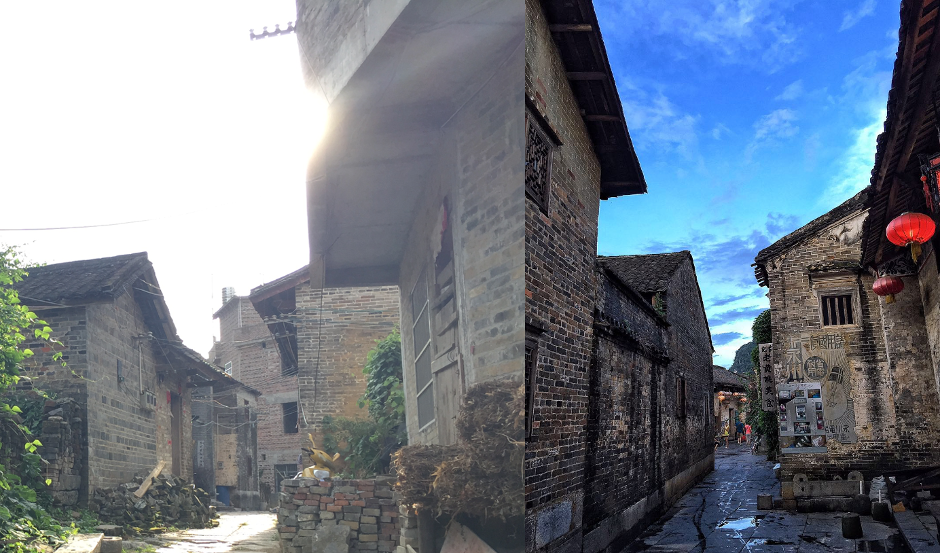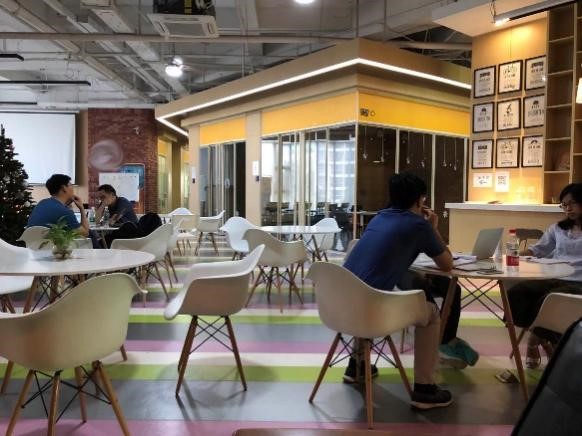Infrastructure is not merely about physical objects, but also a physical articulation of the uneven distribution of power and the struggles for it. Emphasising the heterogeneous nature of a socio-technical system, electricity infrastructure in this research is viewed as a terrain preserved in the meeting and contesting of various actors during the process of urbanisation of a touristic town in China, writes Jiechen Liu
_______________________________________________
This blog is a reflection on the development of research methods based on my doctoral fieldwork experience in a touristic town in China. It takes the precarious electricity infrastructure and the puzzle of its upgrading as the key case. The first part here shows the original intention of this research. Although at the beginning I did not plan to take electricity infrastructure as the research object, the final research output marks a huge shift of focus. When this project was finally completed, I realised that multiple gaps and adjustments between the research design and materials collected in the field were indeed necessary in making this research possible. Then, in the second part, I explain why I took electricity upgrade and contestation as the main research object by recalling the ethnographic research experience. The emerging interest of doing research on electricity shortage at my field site was inspired by long-term observations and continuous thinking. Here lies a methodological issue that is worth further reflections: how shall we transform and reshape our research ideas when in the field? To respond, the third part of this post elaborates the ways through which I managed to study electricity and the data being collected in my fieldwork.
Beyond the New Fashion – Initiating the Research
It has been increasingly trendy in recent years for urban residents in China to move to the countryside. Being tired of the urban way of life, these people are deeply attracted by its rural alternative, which they believe embodies primitive nature, traditional culture and everyday customs and rituals. When they find a home in the countryside, these ‘urban-rural migrants’ try to make their imagined rural lives in such varied ways as building houses, farming and setting up small businesses. These nostalgic activities fancied by individual urban-rural migrants have induced profound social and spatial effects. The original intention of my research was to explore the mechanisms and debates underlying the above new fashion.
Some people treat it as a real alternative, which could hopefully reverse the fate of ‘rural decay’. Considering the collective land ownership in rural China, there is possibly a rich community connotation formed in the countryside through the everyday encounter between residents and urban-rural migrants. If so, it will become a vivid case of ‘rural revitalisation’ or ‘rural reconstruction’ during China’s transition from a rural society to a modern country. Meanwhile, in this process, as tourists and urban-rural migrants arrive, local communities are transformed into tourism sites. Related construction projects would in turn attract the attention of local government and investment (i.e., the state and capital). The local rural and idyllic landscapes have hence been turned into a new frontier of China’s great urban transformation.
There are many towns and villages in rural China that are experiencing such transformations. The one I chose for this research was Huangyao Town, which is located in the north-eastern part of Guangxi Zhuang Autonomous Region (广西壮族自治区). The town centre, which is also known as Huangyao Ancient Town (see. Figure 1), occupies 3.6 square kilometres in the middle, and its other 18 villages occupy the remaining 244 square kilometres. Beautiful landscapes and traditional architecture styles make Huangyao Ancient Town an emerging destination for urban-rural migrants and a new centre of the tourism economy. Since the Ancient Town is located in the core area of the town, it is busy all day long, attracting an increasing number of businessmen to capture new opportunities. To closely observe this town and to experience the everyday lives of the research subjects alongside them, I decided to work as a volunteer in two guesthouses in Huangyao, which are Relevant Guesthouse, and Relevant Boutique Guesthouse.

Encountering the Electricity Shortage – Anchoring the Research
Working in the guesthouse in the town centre provided me with a great opportunity to come across a huge amount of data. Late afternoons and evenings were the busiest ‘data-gathering time’, since many of the residents and hotel owners finished their daily work by then, and would prefer to gather at the main foyer of the guesthouse to chat. During this time, I always had the most informal ethnographic interview and situational conversations to learn more about what had been going on in this village and to listen to people’s opinions about their life and businesses. In the beginning, the conversational data were all about fragmented and random topics in everyone’s daily life. It did not come into my mind to put infrastructure at the centre to explore urban-to-rural migrants’ life until I experienced a one-month electricity shortage in that summer. The immersive experience and intensive observation reminded me of the decisive role of electricity infrastructures which linked everyone in town, no matter where the person came from or what his/her business was about.
Before I first arrived in Huangyao, I had heard of the erratic electricity supply from tourists’ comments on social media. Back at that time, I did not pay much attention to the electricity shortage, supposing it was just a simple technical problem. It is not hard to understand how the electricity shortage technically happened if we take a look at the mismatch between the fast-increasing electricity consumption on the one hand, and an old electricity cabling which was not meant to serve a tourism-oriented economy on the other. After the town became a popular touristic site with the arrival of urban-rural migrants, many houses sat vacant before were renovated and turned into guesthouses, bars or shops, full of electrical equipment, such as televisions, air-conditioners and electric radiators, to meet the demand of tourists and/or urban-rural migrants.
The lack of equal standard electricity infrastructure would not be a problem if it could be upgraded in time. To encourage interviewees to say more about the current situation, I always added a question to our conversation by asking ‘why not upgrade the old electricity wire?’ Also, I tried sometimes to push forward the discussion by adding some platitudes: ‘upgrading the electric wiring sounds like technically very easy, so maybe such a bad situation will soon come to an end.’ My words were immediately charged as very naive in almost every conversation. Then it became a good moment to let the people who knew better tell me more or show me more. From the conversation and observation of the first field trip, I realized that the upgrade of electricity infrastructures in this town had suffered for a long time. The upgraded power lines have been set up but stopped at the outskirts of the town centre. People have been trying many ways to bring the new wire into the town centre where most residents live and new coming business owners’ shop locates, but ‘there is no way out’, said by an interviewee. It is not a question of the speed of construction: the problem lied at a deeper level that is requiring further examination.
As the tourism economy grew in this town, the negative effects of the precarious electricity supply became more significant. The contradiction between the precarious infrastructure and the huge importance attached to the tourism development attracted my attention. Gradually, the electricity puzzle was turned into the most important topic in my research notebook. It is worth exploring why an obvious and easy engineering problem that is beneficial to the further development of all parties (including residents, urban-rural migrants, as well as the investors of tourism economy) cannot be solved. Tourists at peak times always experienced power cuts, and the situation had been going worse. One of the informants told me that more than 300 blackouts occurred in 2016. Sometimes, more than one blackout would occur on the same day and last for more than 10 hours. Therefore, on top of the electricity upgrade puzzle, what also attracted my attention was the everyday strategies and techniques to deal with the precarious electricity condition in Huangyao.
Framing Infrastructure as Method – Let the Electricity Act
When the infrastructure functions properly, people work and live normally. It feels as though the infrastructure does not even exist, or it becomes imperceptible (Star, 1999; Graham, 2010). But once a problem with the infrastructure arises, people would talk about how such infrastructural system was normalised in life and how to deal with its interrupted situation. This is even more disturbing when the most commonly used infrastructure systems failed, such as electricity in the story in Huangyao, which would disrupt all kinds of businesses and public activities. Over time, the changes brought about by the collapse of infrastructure were less conceived as temporary troubles than as habitual conundrums that people must accommodate one’s life to it. More than a research object, the central role of the problematic electricity infrastructure in this research could be regarded as a method to guide research designing and data collection.
Unlike its normal condition as a substrate, the problematic electricity infrastructure in the spotlight shows its nature as a social-technical system, which is the mixture of inseparable and mutually influential relationships between human users and technical devices. In this sense, infrastructure is not only about things running through it, but also about ‘the relation between things’ (Larkin, 2013, p. 329). Rather than setting a definite border to demarcate, I treat infrastructure as a complex assemblage which brings together all manner of human and non-human agents (Bennett, 2010, p. 24). Fixing the power line or praying for a stable power condition became an everyday practice of Huangyao people, as an indispensable topic when people were to say hello or gossip together. They gradually became infrastructural subjects, as infrastructure is like an engine in redefining their lived practices and altering their attitudes towards changing social and economic conditions.
Then, how shall we investigate such an assemblage in the field? Specific data-collection methods, including participant observation, in-depth interviews, and textual analysis were used to approach different types of human and non-human actors, as well as their interaction in forming and shaping the ‘life trajectory’ of the electricity infrastructure in Huangyao. Let the infrastructure guide the research does not mean to abandon the discussion by revealing the relevant social forces as powers ‘behind’. The politico-economic analysis of urban transformation and capitalization of this touristic site on a macro level is undeniable insightful. Under this view, data about the land property ownership, the politics among different levels of administrative offices, the process of land speculation and contestation, and the right of different social groups to participate in tourism project were collected. In the same way, as a large technical system, studying electricity from this perspective needs data about the ownership and regulatory reform of the power industry in China, and the construction of power plants and electrical substations near Huangyao region.
As the background/ backdrop exists only in the course of building a network (Bijker and Law, 1992, p. 13; Latour, 2005), the infrastructure upgrade should not only be viewed as dead matters resulting just from the impact of social forces. Instead, the process of negotiation, maintenance, and entanglement of planning/ disrupting/ contesting/ upgrading the electricity cables of Huangyao, not only passively underwrote the social forces ‘outside’ but were also actively involved in ‘assembling these very social and political forces that seem to have preceded it’ (Shamir, 2013, p. 9). Therefore, besides the macro perspective mentioned in the previous paragraph, four types of data from a micro perspective were also needed. First, some practical restrictions that blocked the electricity upgrade. For example, as a touristic and cultural site, the Protection Plan of the Ancient Town prevented the electricity wires from appearing on the main streets to disturb the landscape (see. Figure 2). However, physical situations such as the narrow streets, dense houses, and the fragile house structure, also limited the ways to set up power lines. Second, there were different perceptions of electricity use among individual business owners, tourists, and villagers. Different attitudes towards electricity shortage must be investigated. Third, many small technical devices were adopted to boost electricity by individual residents. Practical solutions, constant maintenance and repair work in the local community were important data to be discovered. Fourth and finally, generating, transmission, and consumption of electricity follows electrical principles. The researcher needs to spend some time to explain and interpret the phenomenon in the language of electrical knowledge.

This is how electricity infrastructure has become not only the research object, but the research method as well. The politico-economic concerns are manifested in the form of problematic infrastructure, and at the same time, there are also political actions functioning through the everyday use of it. As mentioned at the very beginning of this post, the physical form of infrastructure has its heterogeneous nature of a socio-technical system, which articulates the uneven distribution of power and organises the struggles for it.
References
Bennett, J. (2010). Vibrant Matter: A Political Ecology of Things. Durham; London: Duke University Press.
Bijker, W. E. and Law, J. (1992). General introduction. In: Bijker, W. E. and Law, J. (eds) Shaping Technology/Building Society: Studies in Social Technical Change. Cambridge, MA; London: The MIT Press, pp. 1–16.
Graham, S. (2010). When infrastructures fail. In: Graham, S. (ed.). Disrupted Cities: When Infrastructure Fails. New York; London: Routledge, pp. 1–26.
Larkin, B. (2013). The Politics and Poetics of Infrastructure. Annual Review of Anthropology 42: 327–343.
Latour, B. (2005). Reassembling the Social: An Introduction to Actor-Network-Theory. Oxford; New York: Oxford University Press.
Shamir, R. (2013). Current Flow: The Electrification of Palestine. Stanford, CA: Stanford University Press.
Star, S. L. (1999). The Ethnography of Infrastructure. American Behavioral Scientist 43(3): 377-391.
_______________________________________________
About the research
This blog is based on the author’s doctoral project conducted between 2014 – 2019, named Power Politics and Infrastructure Participation: Electricity Contestation and Urbanisation in a Chinese Touristic Town. It first arguesthat the disruption of the electricity supply and the obstacles to its upgrading originate from the mutual exclusion of the local inhabitants and local government during the process of Huangyao’s urbanisation and tourism development. It then analyses the disputes over the electricity upgrade, leading to a situation of non-communication, which explain why the problems of electricity infrastructure are harder to solve in certain politico-economic contexts. As a result, additional infrastructural devices are adopted by individual users to boost electricity when unstable infrastructural conditions are normalized in everyday life. Such action through everyday electricity use produces an infrastructural space to change the current situation and forms a kind of participation through infrastructure. The research concludes that infrastructure can give a voice to a less visible and non-traditional infrastructural public: a terrain where politico-economic concerns are manifest and negotiated through everyday experience.
For citation: Liu, J. (2021) Encountering the electricity shortage: Research Methods driven by infrastructure disruption. Field Research Methods Lab at LSE (12 April) Blog entry. URL: https://blogstest.lse.ac.uk/fieldresearch/2021/04/12/encountering-the-electricity-shortage-research-methods-driven-by-infrastructure-disruption/





